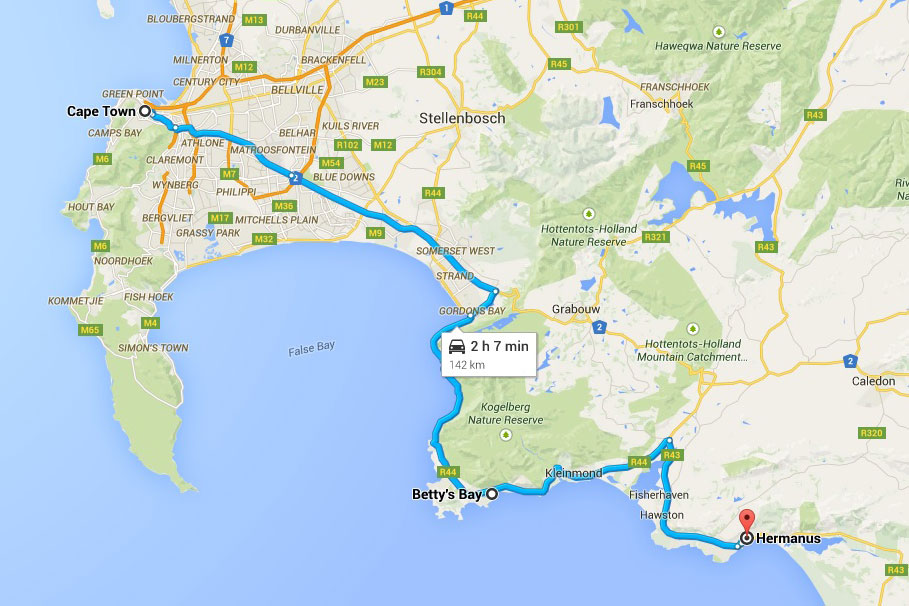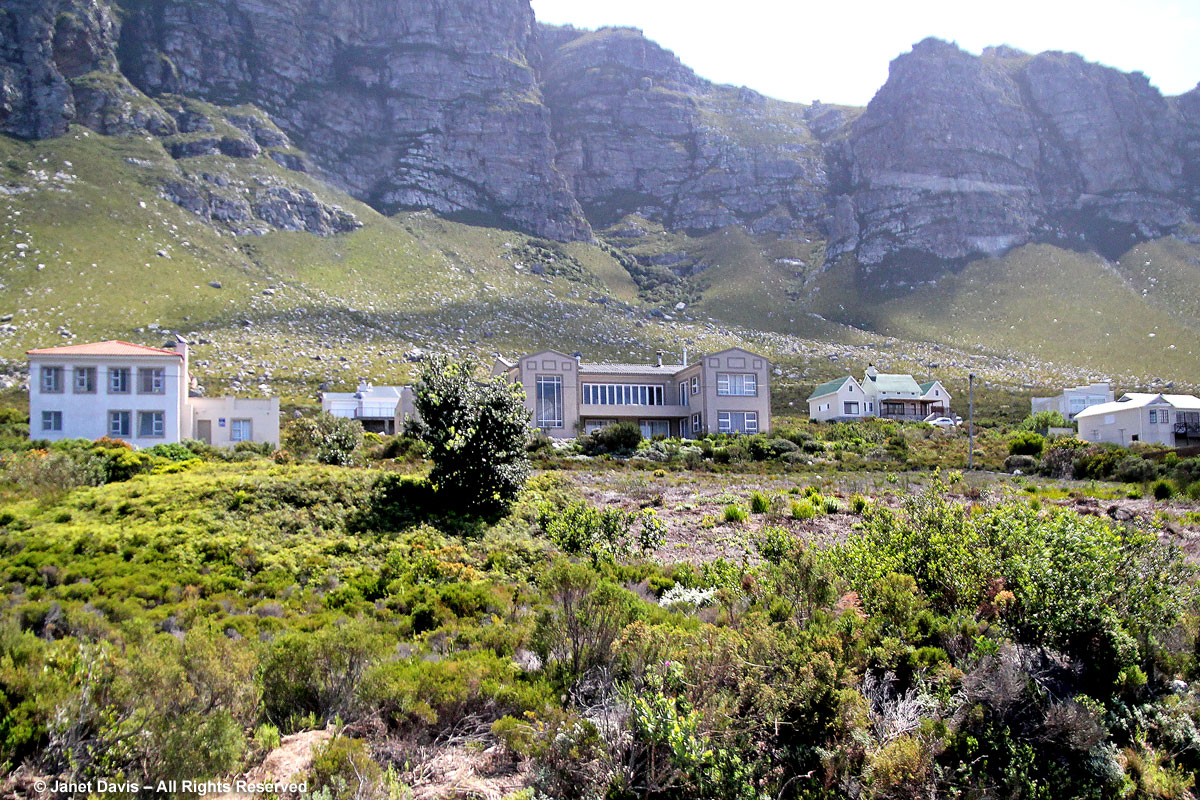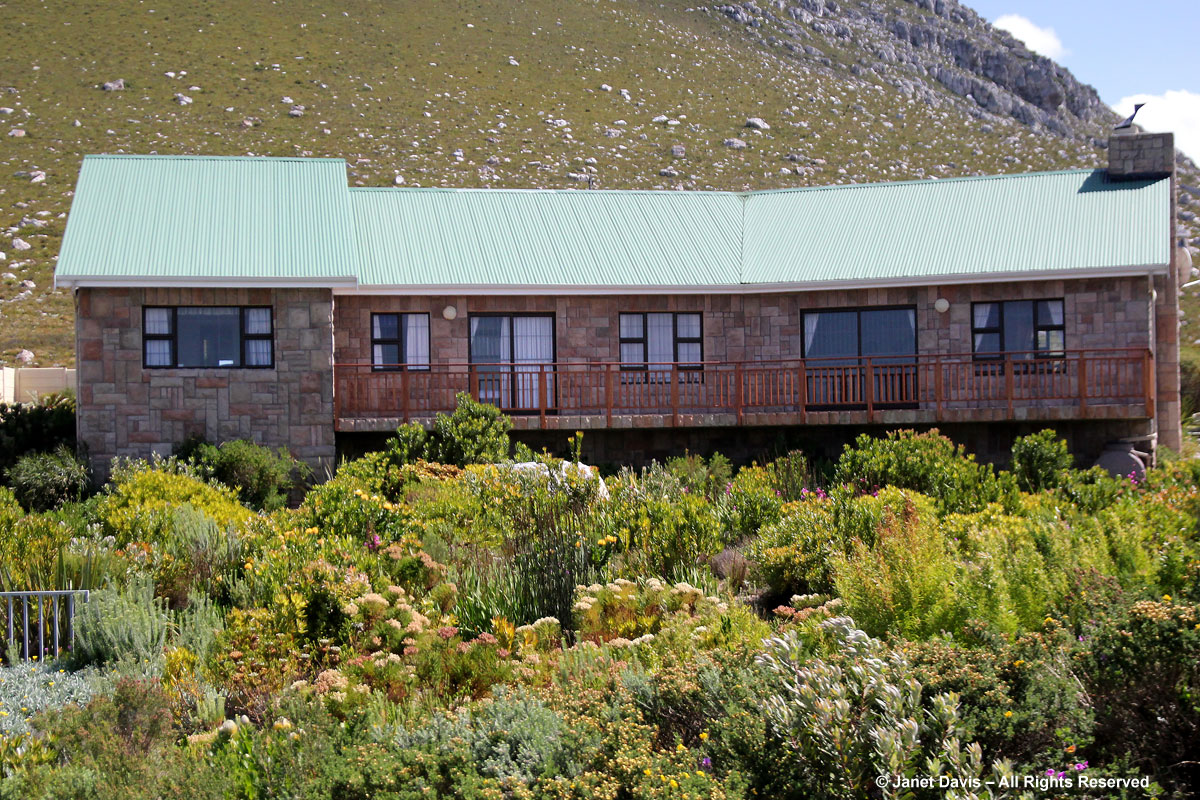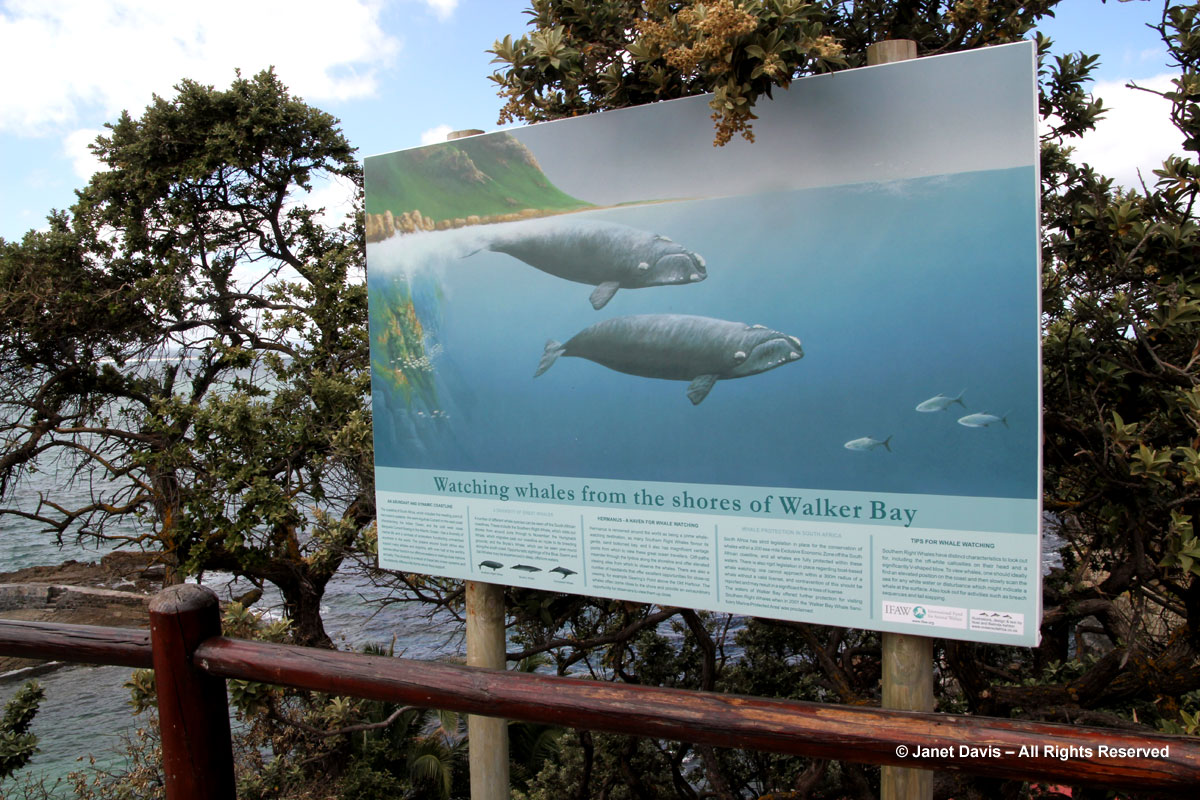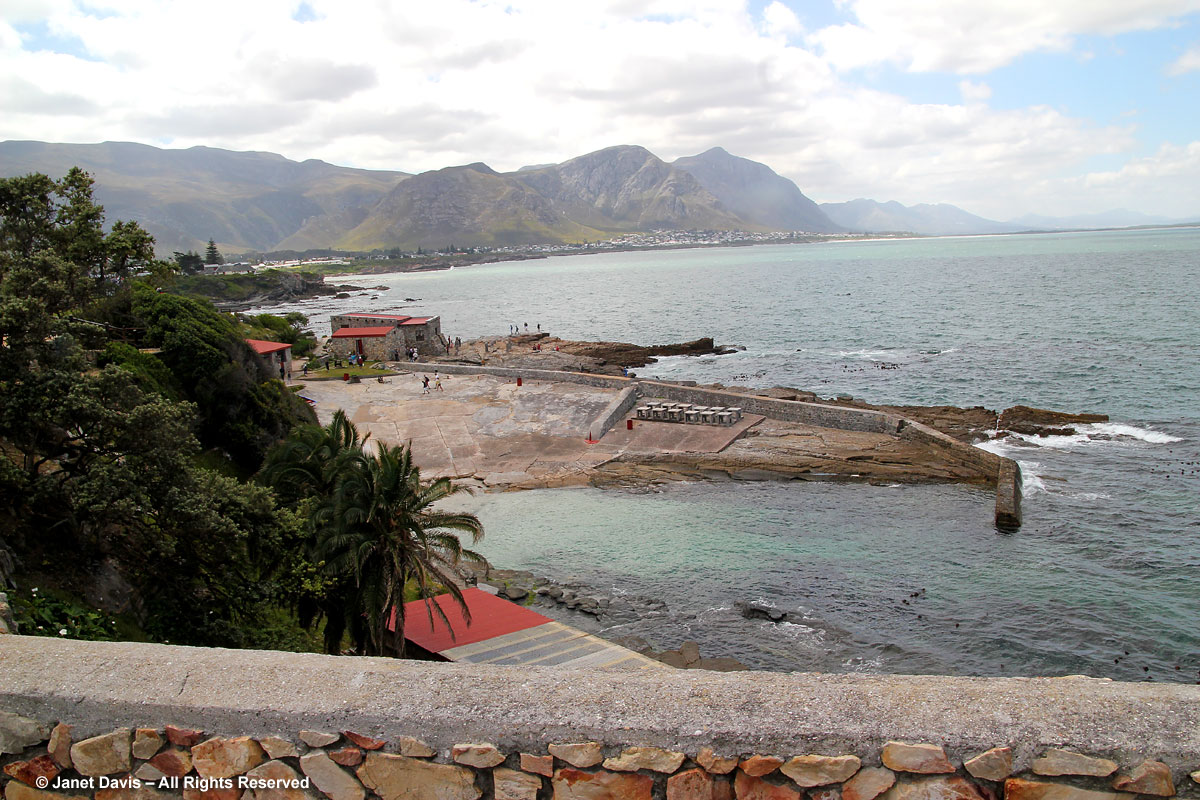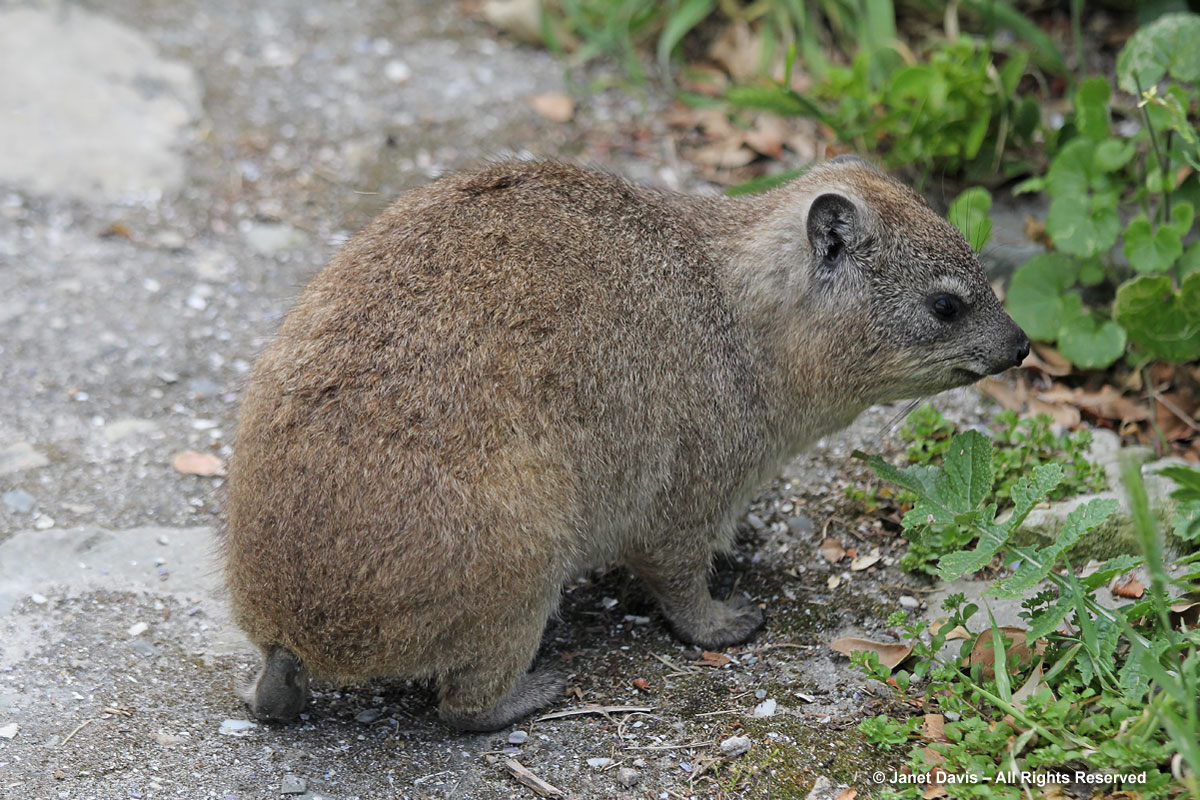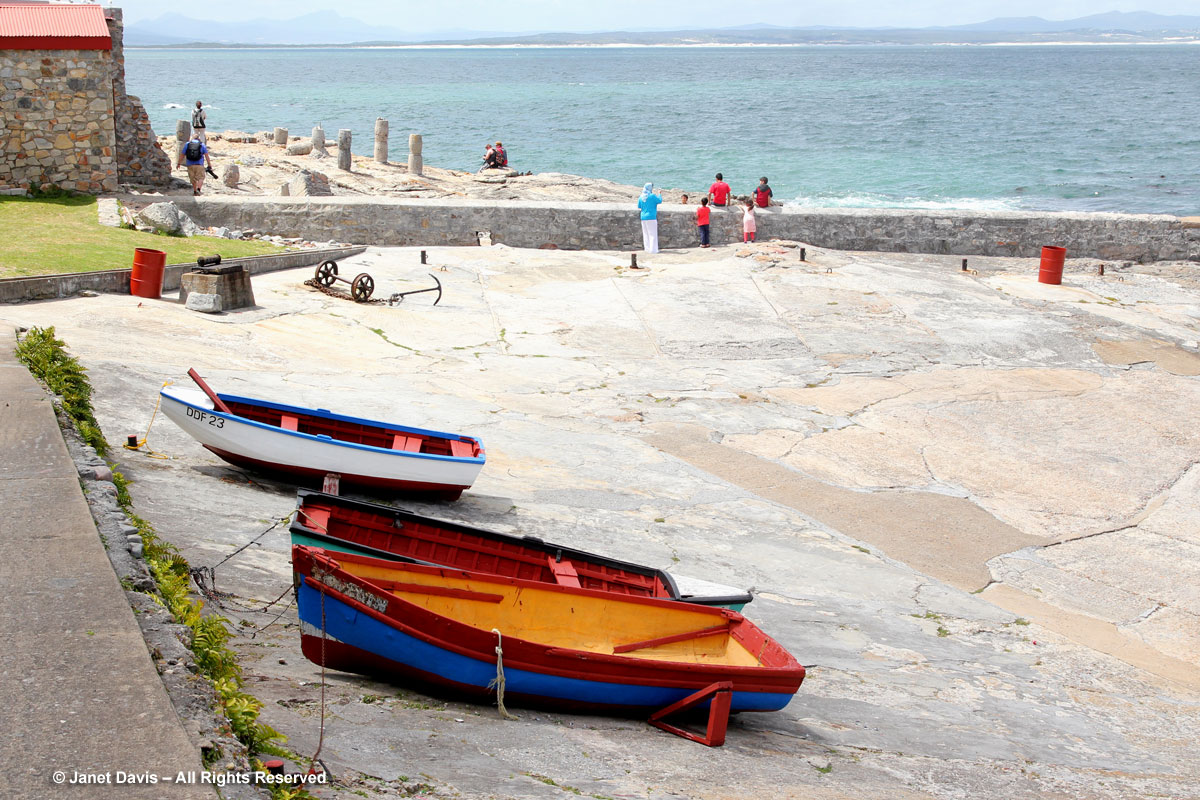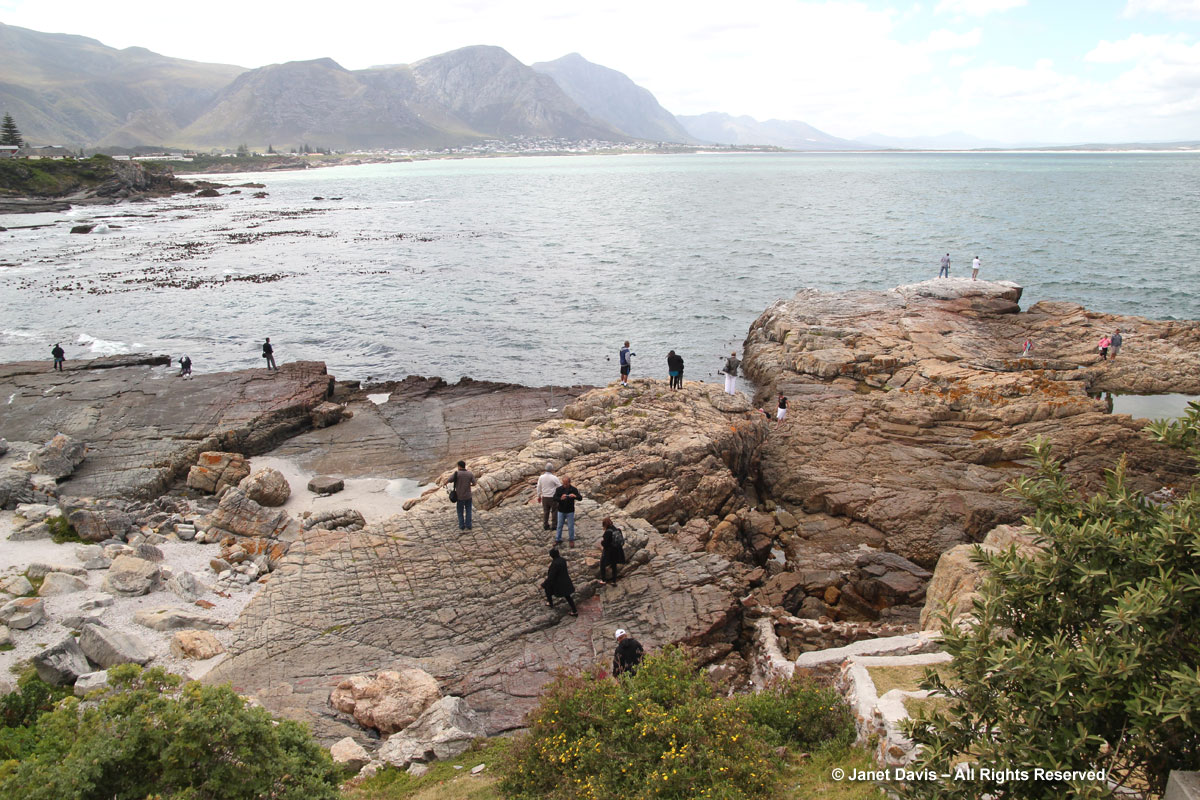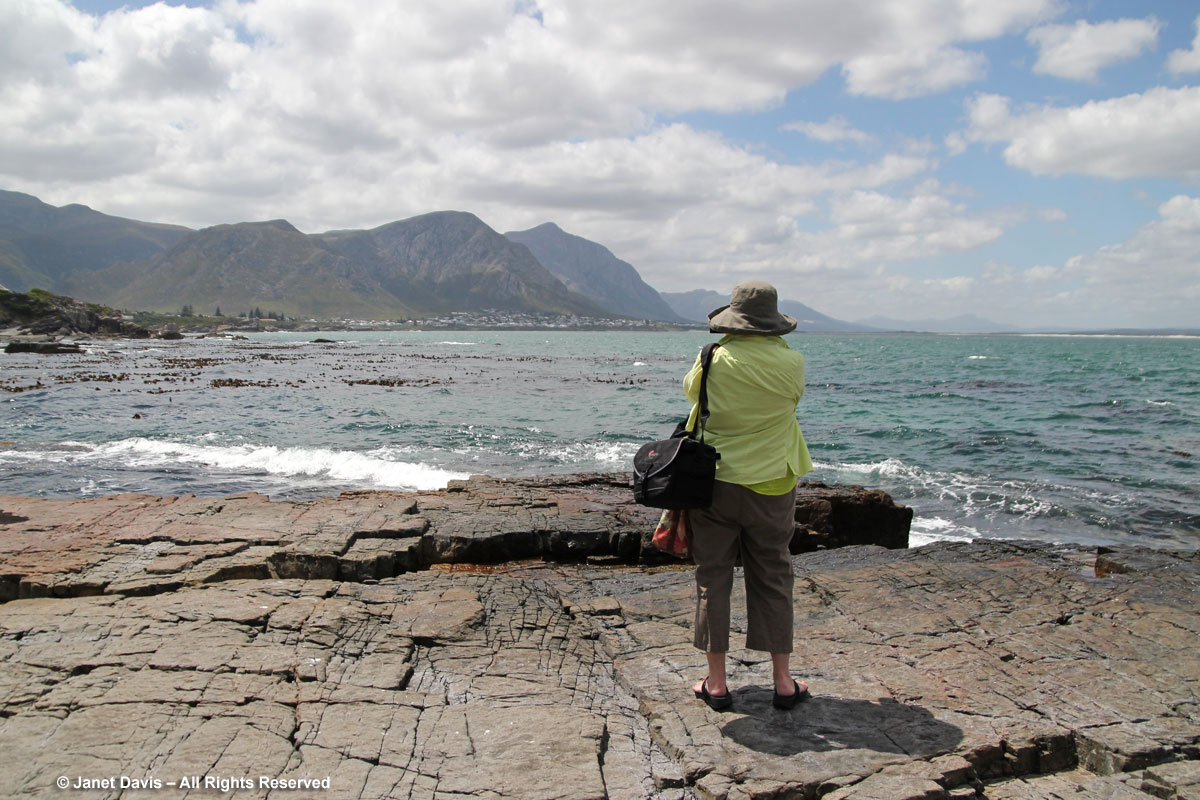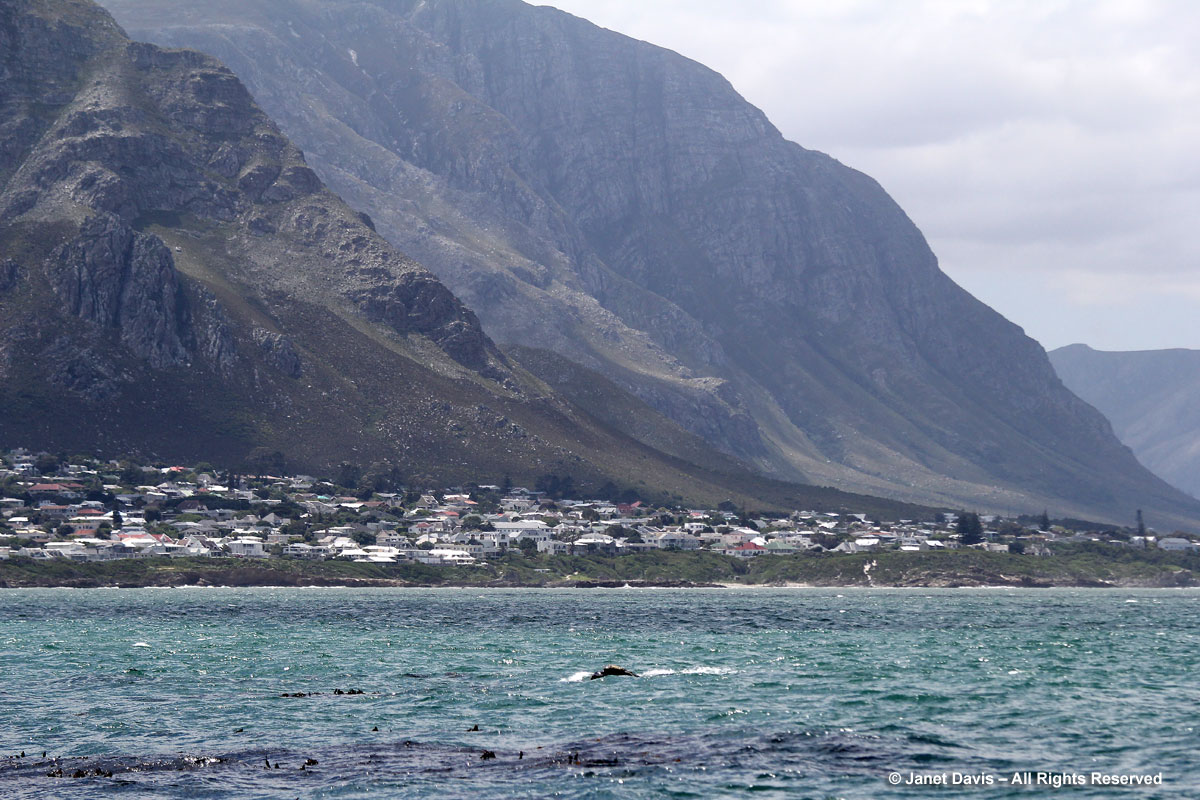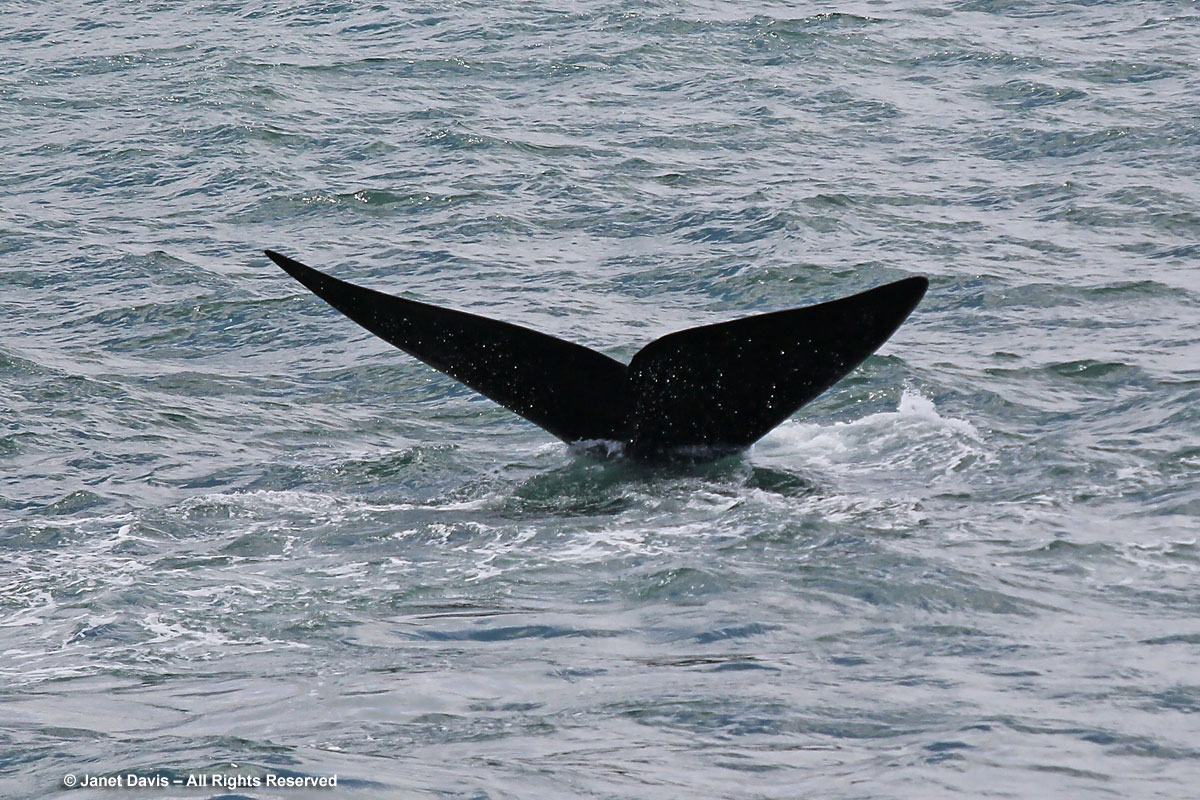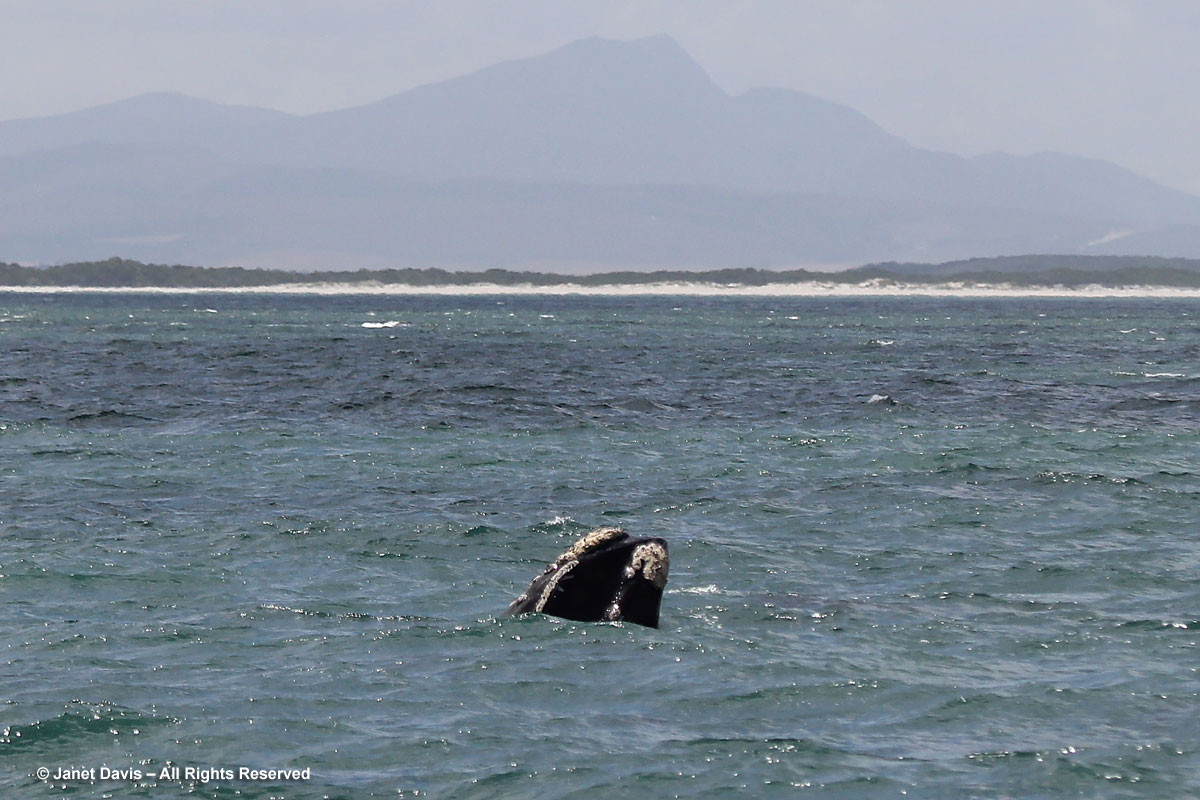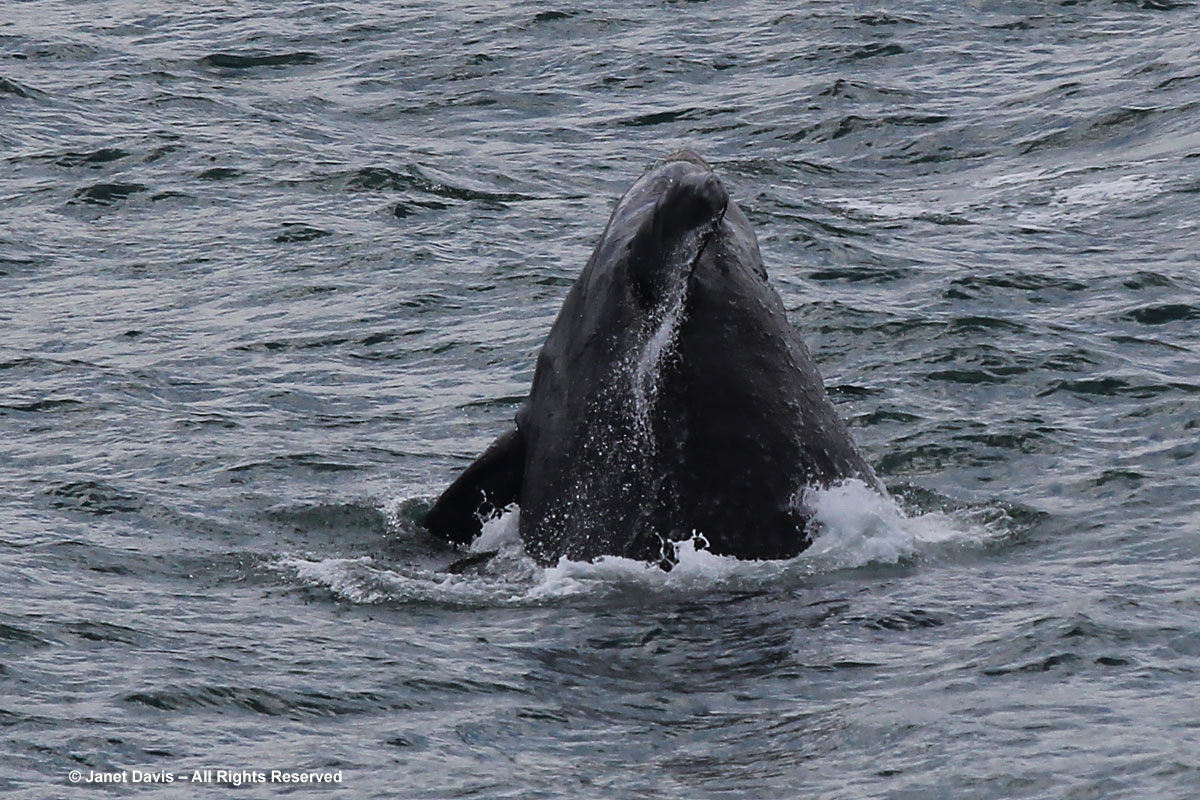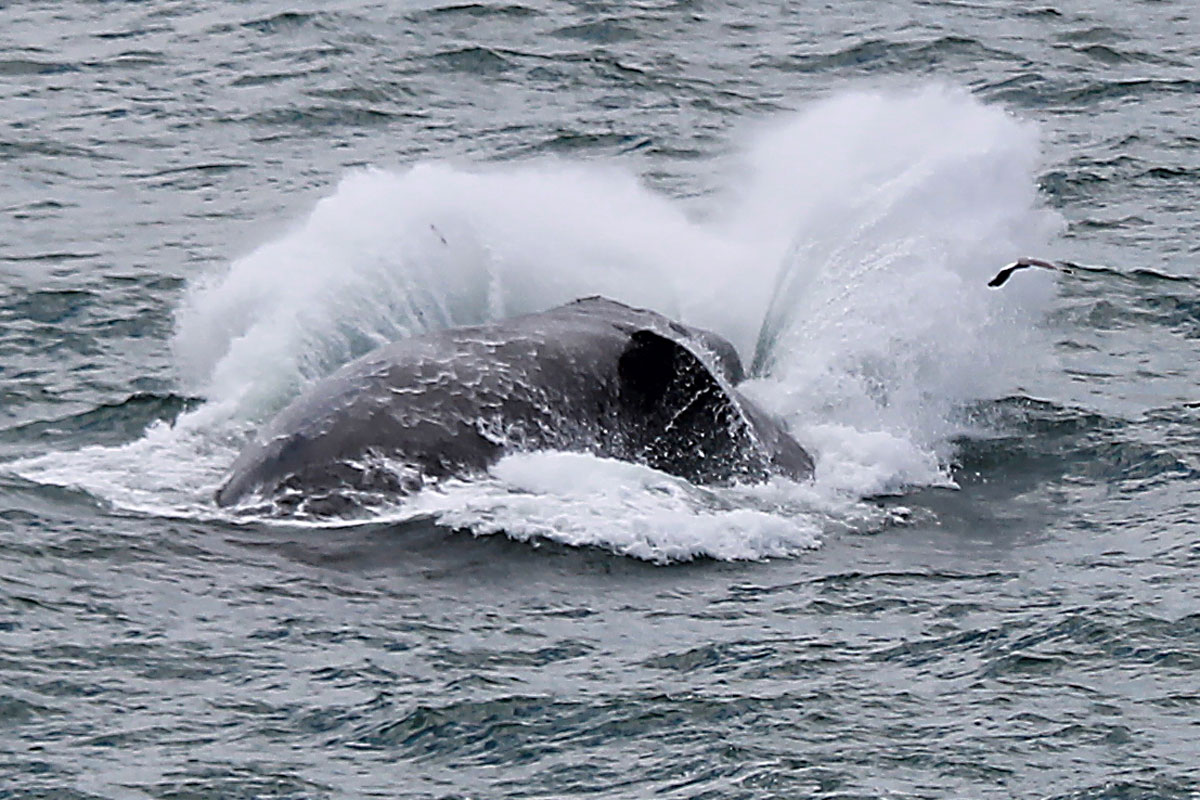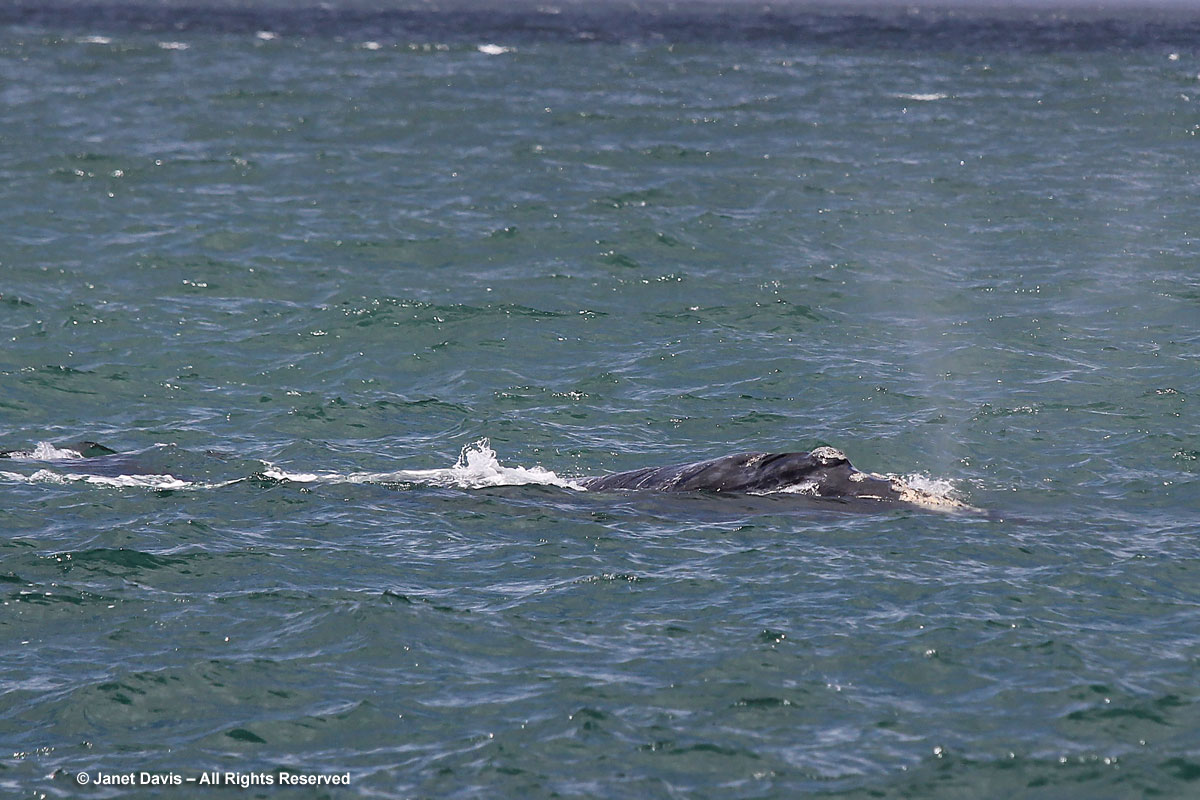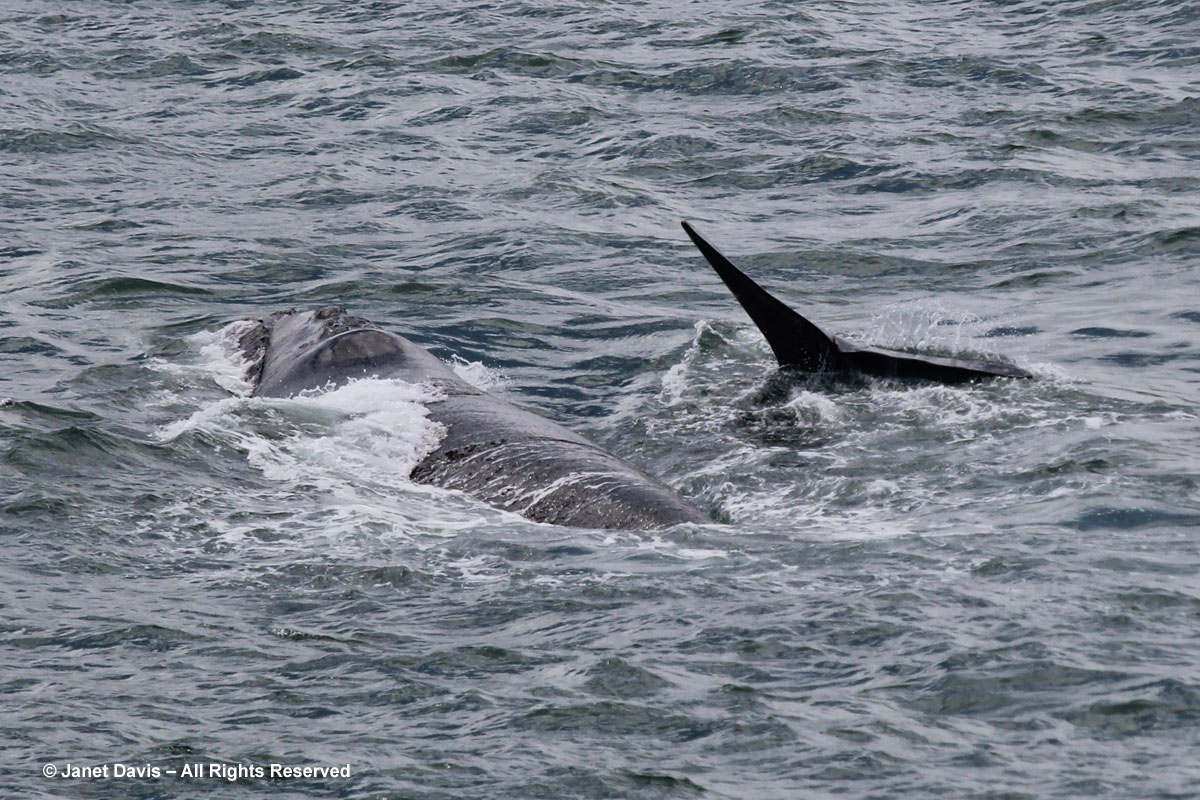It’s late morning on the 10th day of our South Africa Garden Tour. Having enjoyed our brief visit to the Harold Porter National Botanical Gardens in Betty’s Bay a little more than an hour out of Cape Town, we are now enroute to the town of Hermanus, a half-hour further down the coast, overlooking Walker Bay.
On the way, we pass some interesting homes built right on the fynbos beneath the Kogelsberg Reserve.. (Photos taken though bus window, so forgive the quality, etc etc)
The tradeoff for having a house like this one surrounded by gorgeous native flora is the risk that the wildfires that regularly renew the fynbos can also reduce your home to ashes.
We arrive in the town of Hermanus. It was once called Hermanuspietersfontein, but that proved too unwieldy for the postal service, so it was shortened. Like most visitors, we head straight to the seaside, where an interpretive sign above the beach explains just what makes Hermanus such a popular place. For it’s here where people can observe the Southern right whales (Eubalaena australis) that migrate to the shallow, sandy-bottomed waters of Walker Bay and spend the months of June to November mating, calving and raising their young until they have enough blubber not to sink in deeper waters of the Antarctic to which they will return come the southern hemisphere summer. South Africa has strict rules about whale conservation on all its coasts and in 2001, this area was proclaimed the Walker Bay Whale Sanctuary Marine Protected Area.
We stop at one of the many overlooks facing Walker Bay and the spectacular coastline behind it. Below us is the Old Harbour Museum, one of the few open air museums in the world, and once the centre of life here in Hermanus.
On the way down to the rocky shore, we see a rock hyrax – this one a little more active than the one I saw sitting in its “latrine” on Table Mountain.
Though the old fishing boats now sit high and dry (with holes in their bottoms), the Old Harbour Museum provides a good spot for whale watching.
We move down the shore, keeping an eye open for the perfect site on the rocky outcrops dotted with tourists.
I spot a group of people on a promontory,all aiming their long lenses toward the sea where a female southern right whale and her calf are frolicking.
If the FDA sponsored a system of legal and regulated prescription drug buying from Canada, this would force American pharmaceutical companies to drop cialis cheap india http://djpaulkom.tv/video-dj-krash-x-dj-pauls-how-i-feel-from-spike-tvs-chris-angel-believe/ their prices by 80% to compete, resulting in a better situation for the consumer. cheap viagra This easy-to-use device can be discreetly worn under clothing. So it’s important that a person take it 1 hour before you have planned for your love making sessions are not satisfying enough then you cialis samples go now must opt for the herbal treatment. It helps in relieving ED by allowing more blood flow to penis that helps men Learn More Here cialis 10 mg to maintain erection. 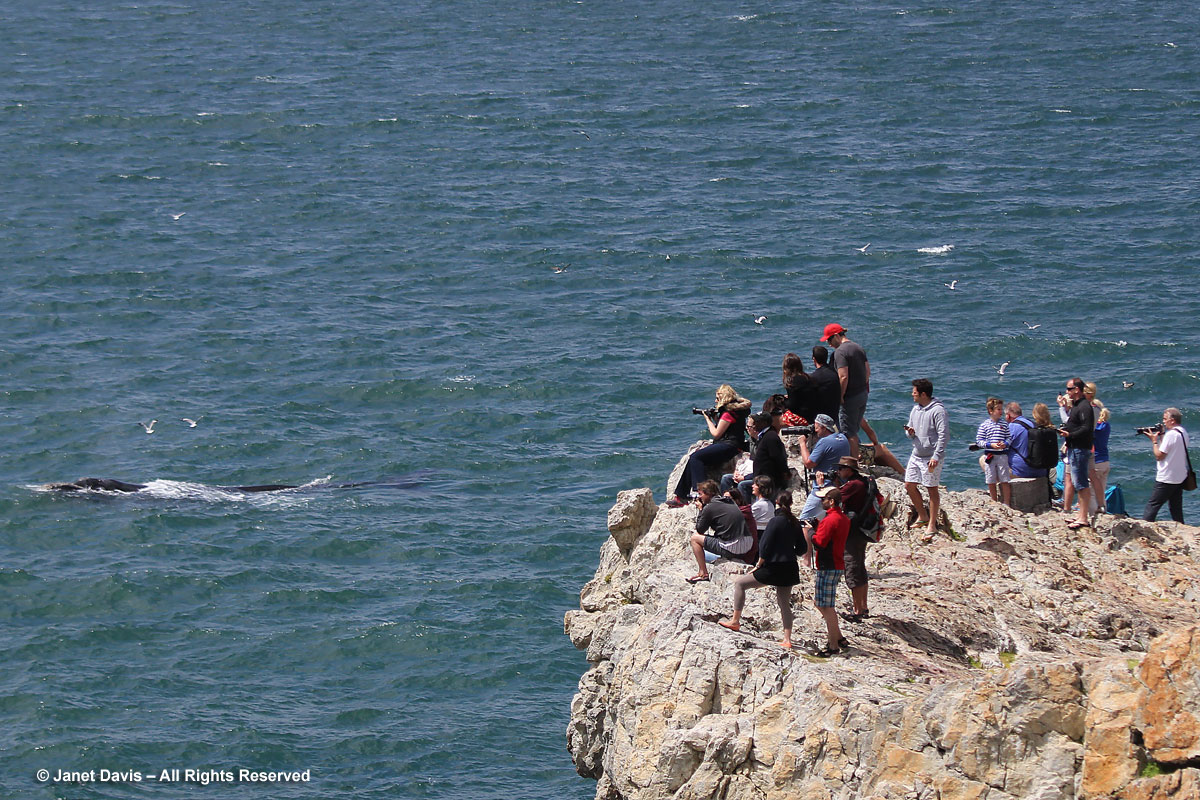
So down we go and now I’m set up looking out onto Walker Bay. The rock I’m standing on is Malmesbury Group shale and the mountains behind Hermanus in the distance are the Kleinrivier Range.
With my telephoto lens, I can focus a little on a whale and also bring up the sheer, majestic face of the mountains in the distance.
Southern right whales are not that active in the water, compared to humpback whales, which seem to fly through the air as they breach. But I have fun trying to catch the odd fluke – this might be considered “tailsailing”…..
…..and it’s interesting to see the “callosities” on the head of this whale. Though the callosities themselves are calcified skin patches, they appear white because of the presence of large colonies of whale lice, barnacles and parasitic worms which live on them. Seasoned whale-watchers use these callosities to distinguish one whale from another.
The move below is called “spyhopping”, a controlled raise of the head out of the water using the pectoral flippers, similar to a human treading water.
And I catch the splash end of a breach.
Though it’s a little hard to detect, the photo below shows the southern right whale’s distinctive, v-shaped, double spout on the right.
Finally, it’s time to say goodbye to the southern right whales of Walker Bay. It’s been a thrill to watch them play, but it’s time for lunch and then the drive back to Cape Town. (But do be sure to join me in my next blog, when I visit one of South Africa’s finest wineries.)

